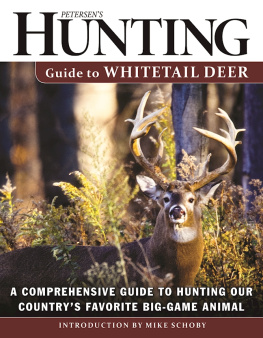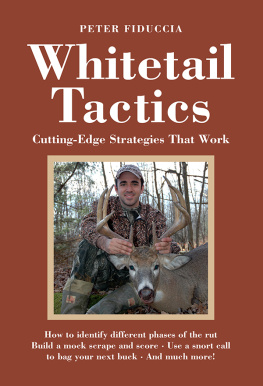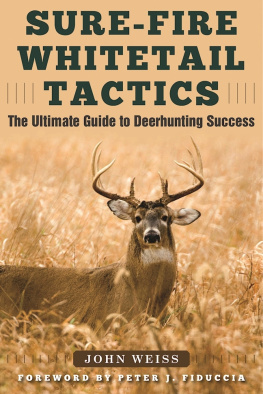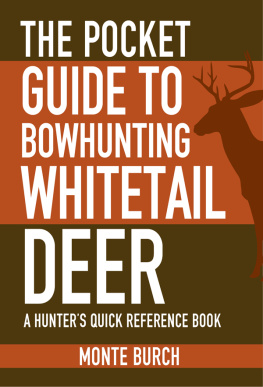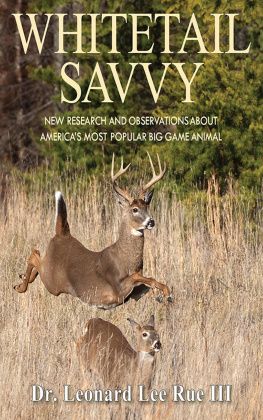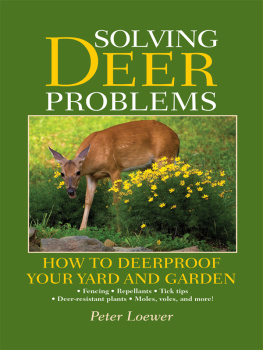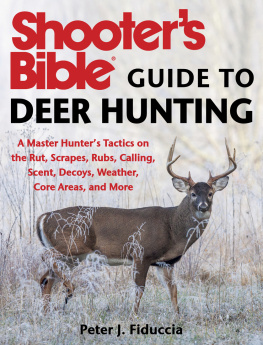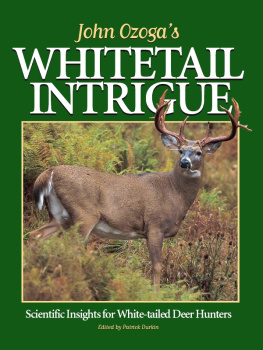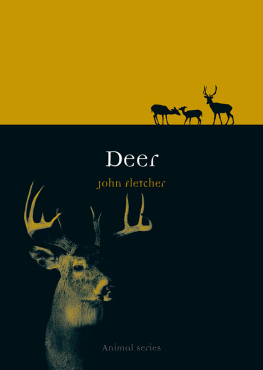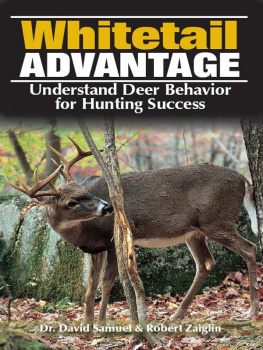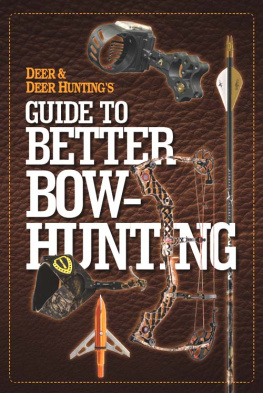Deerland is an inquisitive and eye-opening tour through the history, science, politics, economics, and cultural quirks of our uniquely American relationship with the white-tailed deer. From ecologists and foresters to farmers, hunters, homeowners, and business owners, Cambronne introduces us to a fascinating cast of characters whose lives, like yours and mine, are inextricably linked to whitetails.
Tovar Cerulli, author of The Mindful Carnivore:
A Vegetarians Hunt for Sustenance
Whether you hunt them or watch them, love them or loathe them, you need to understand that deer are not just another wild species on the rural and suburban landscape but the single most economically important and problematic wild creature in our midst. This book tells you why in fascinating detail.
With Deerland: Americas Hunt For Ecological Balance and the Essence of Wildness, Al Cambronne takes us deep inside what he calls the deer-industrial complex and the many billions of dollars spent annually not only growing and pursuing whitetails but also fixing the damage their overabundance causes. He takes us to auto body shops that thrive on deer-vehicle crashes and shows us crops, forests, and entire eco-systems stunted by whitetail over-browsing. He explains the whitetails magical allure for hunters and watchers alike, but how the small fortunes they spend on supplemental food to keep deer around makes things worse.
Cambronne offers up a tour de force on deer history, biology, ecology, economics, and politics, and how the quest for deer and their antlers largely built Americas outdoor industry. Hes a good reporter, taking the reader along to learn from experts, then putting down what he learns in a wonderfully-written, comprehensive, balanced, often funny and important book.
Jim Sterba, author of Nature Wars: The
Incredible Story of How Wildlife Comebacks Turned Backyards into Battlegrounds
Deerland is an absorbing survey of both the depth and breadth of Americas obsession with deer, and of the biological, economic, and sometimes lethal consequences of that obsession. From the multi-billion dollar deer hunting industrys antler-mania to the surge in adult-onset meat hunters to the bizarre way we have transformed our landscape into ecologically unbalanced deer preserves, after reading this book you will never look at Bambi in quite the same way again.
Hank Shaw, author of Hunt, Gather, Cook:
Finding the Forgotten Feast
Fair-minded to a fault.... Even if you do not care about deer, deer hunting, or deer hunters, Deerland is a book well worth reading. Deer have become a major force in shaping the landscape. They also impact our economy: crop damage, collisions with deer, and treatment for Lyme disease add up to several billions of dollars annually. Al Cambronne has written a lively, thoroughly researched book on the way deer have shaped us and we have shaped deer.
Jan Dizard, author of Going Wild:
Hunting, Animal Rights, and the Contested Meaning of Nature
DEERLAND
Americas Hunt for Ecological Balance
and the Essence of Wildness
AL CAMBRONNE

For Jean
Copyright 2013 Headwaters Communication
ALL RIGHTS RESERVED. No part of this book may be reproduced or transmitted in any form by any means, electronic or mechanical, including photocopying and recording, or by any information storage and retrieval system, except as may be expressly permitted in writing from the publisher. Requests for permission should be addressed to Globe Pequot Press, Attn: Rights and Permissions Department, P.O. Box 480, Guilford, CT 06437.
Lyons Press is an imprint of Globe Pequot Press.
Project editor: David Legere
Text design: Sheryl P. Kober
Layout artist: Melissa Evarts
Library of Congress Cataloging-in-Publication Data is available on file.
ISBN 978-0-7627-8027-3
Printed in the United States of America
E-ISBN 978-0-7627-9314-3
Foreword: Welcome to Deerland
We live in Deerland.
The United States now has over thirty million deer, a hundred times more than just a century ago. They routinely disrupt entire ecosystems. They ravage our gardens and suburban landscaping, and every year they kill and injure hundreds of us on our highways. No wild animal larger than a skunk or raccoon is anywhere near so numerous and widespread.
Still, deer are magical. Their mere existence makes the woods feel wilder. They signify far more to us than just meat, antlers, or a graceful, mysterious creature slipping through the shadows. In our collective imaginations theyve become an archetypal symbol of the wilderness experienceor at least of a gentrified country lifestyle.
Love them or hate them, weve all come under their spell. We name suburban housing developments after them. We commute farther and borrow more so that we can live beside them. If money remains, we buy vacation homes where well see even more of them. A few of us happily spend two or three years salary for a small piece of untillable land on which we can hunt them. In much of America, deer are now the single greatest driver of the rural real estate market.
More American hunters pursue deer than any other quarry, and this inevitably makes hunting part of our story. Rest assured, however, that hunting is only one part of a much larger environmental, social, and cultural story. And regardless of how you may feel about hunting, in many parts of America we now have a very real problem with too many deer. In some of those places, hunting is a big part of the solution. Its also, some would argue, a big part of the problem.
All too often we manipulate entire ecosystems in ways that benefit deer. When forced to choose between whitetails and all other wildlife, we almost invariably choose deer. As a result most of us, even if we spend a fair amount of time in the woods, have never once seen a forest thats not shaped by deer.
Still, for venison-loving hunters and vegan wildlife watchers alike, the very phrase overabundant deer can seem a puzzling oxymoron. And by the time we finally comprehend the choices weve made, theres no going back. Yes, it definitely is possible to have too many deer. The only question is: How many is too many?
Deer are one of the most charismatic of the charismatic megafauna. All too often their charisma prevents us from thinking clearly and rationally about questions like this one. Every time that happens, it has consequences for us, our deer, the environment, and the American landscape.
Indeed, our complex relationship with deer makes for a twisted tale of love, obsession, and consequences. First come love and obsession. Then come the consequences. At first glance these might seem like stories for two different books. In one, wildlife watchers lure deer to their backyard feeders, locavore foodies trade gourmet venison recipes, antler-obsessed bowhunters perch in treestands, and millions more hunters spend big bucks in the pursuit of big bucks. In the other are car crashes, Lyme disease, agricultural losses, environmental devastation, and endless hordes of deer invading Americas suburbs.
But in the end these two stories are inseparable. Theyre two sides of the same coin, and its impossible to tell one story without the other. Indeed, its impossible to understand either story without fully understanding the other.
Youre about to begin a journey through Americas forests, farms, and suburbs. Well peer inside Americas deer-industrial complex, explore hidden subcultures, and learn how the effects of a gluttonous deers dinner echo and reverberate through an entire ecosystem. Its time to take a long, hard look at our love, our obsession, and their unintended but inevitable consequences. By doing so well be better able to restore the balance weve disrupted. Its time to tame the charismatic mega-fawn.
Next page

